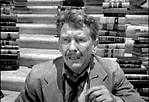A late contender deserves mention along with a comment or two.
I've just given a battle test of Revell Germany's Aqua Color acrylics. They're not available in the US but are all over the UK and for stuff like paint shipping is nickle/dime and normally quite fast.
Aqua Color are water based acrylics and do resemble Vallejo Model Color somewhat. I did hand brush a good hunk of battleship yesterday and the results were very impressive. Revell claims that their line is "self-leveling." (Pledge/Future has that quality which is why you dip a cockpit into a jar and have it look just fine.) In my use the brush strokes were almost invisible so Revel stands vindicated at least for now. They have 88 colors and, being a German company, have a lot of military types keyed toward German schemes. (I was painting with "Squirrel Gray" also labelled RAL 7001 - a very hard color to duplicate.) They certainly have very good looking German armor colors. See more at
http://www.revell.de/index.php?id=287&L=1. They recommend only a small amount of distilled water for brush painting. I use "Flow Aid" which is a leveler and retarder found in several brands in any art supply store. (It's mixed with distilled water at 10:1.) Revel warns not to use more than 20% thinner. I think the reason would be the same as that given by Golden Acrylics for their fluid line of artist acrylics. Too much water will break down the molecular integrity of the mix.
For "low and slow" airbrushing this can be easily handled by employing acrylic "mediums" like "airbrush" "airbrush extender" "satin", "varnish" or a lot of other goodies that contain polymer. Indeed, if mixed with this kind of stuff you can use a water based model or fluid based artist acrylic for a very thin layer of airbrushing. This is important to me because I like to airbrush at about 18psi. For higher psi the recommended 20% distilled water would work fine I'd think.
BTW: I am very fond of fluid artist acrylics like Golden or Liquitex. I think the better pigments make them worth the price over craft paints like Dream Coat or Apple Barrel, although I'm sure the later would be fine to dios. You do have to master the basic "mediums" but once you do you can literally design your own paint. It's very good stuff when properly used and very reasonably priced. Mediums are expensive but would last for years - overall this stuff would easily be the least expensive answer to quality model painting. And if you don't like the powerful solvents used in lacquers, enamels or the solvent based "acrylics" like Tamiya or Gunze, they are the best because they're so benign. You can't smell Aqua Color.
Some reporter asked famous Depression Era bank robber Willy Sutton after his capture why he robbed banks: "that's where the money is" answered Willy. For buying paint brushes you can't beat an artist supply store. They'll have everything from Euro sable that can push $50 to craft style synthetics for $2 per brush. (That would be a good cheapo: packages are cheaper yet. Although you'd have to go to a crafts store for real low cost items.) You'll know you're at the right place when they have huge bins with brushes designed for acrylics, oils and water colors specifically, as well as "all rounders." I've looked at model maker brushes and they're okay but priced maybe three times too high. If you've got the mentality maybe a few very expensive brushes would be worth it - if you know and practice brush care they will last for years. I don't so I buy some el-cheapos for many uses and fair quality synthetics for actual modeling. They won't last an eternity but I pick up replacements every couple of kits. A new or nearly new synthetic will beat the hell out of a badly cared for sable. Adam Wilder has recommended buying a new #1 or #2 for each kit specifically for armor chipping. Basically, I think he's right.
My views anyway.
Eric












































